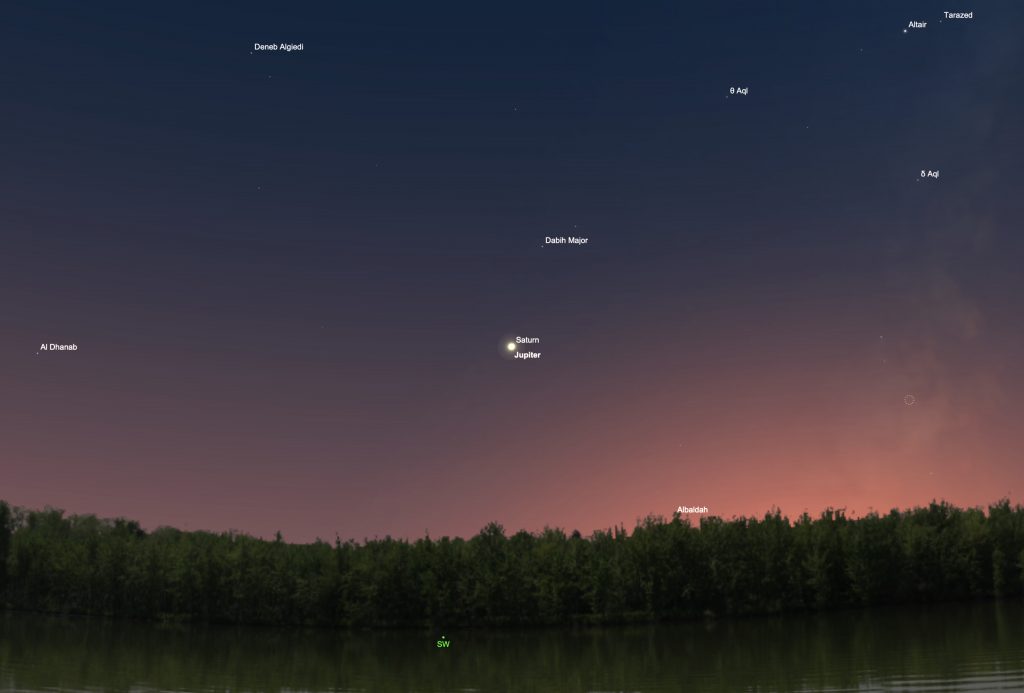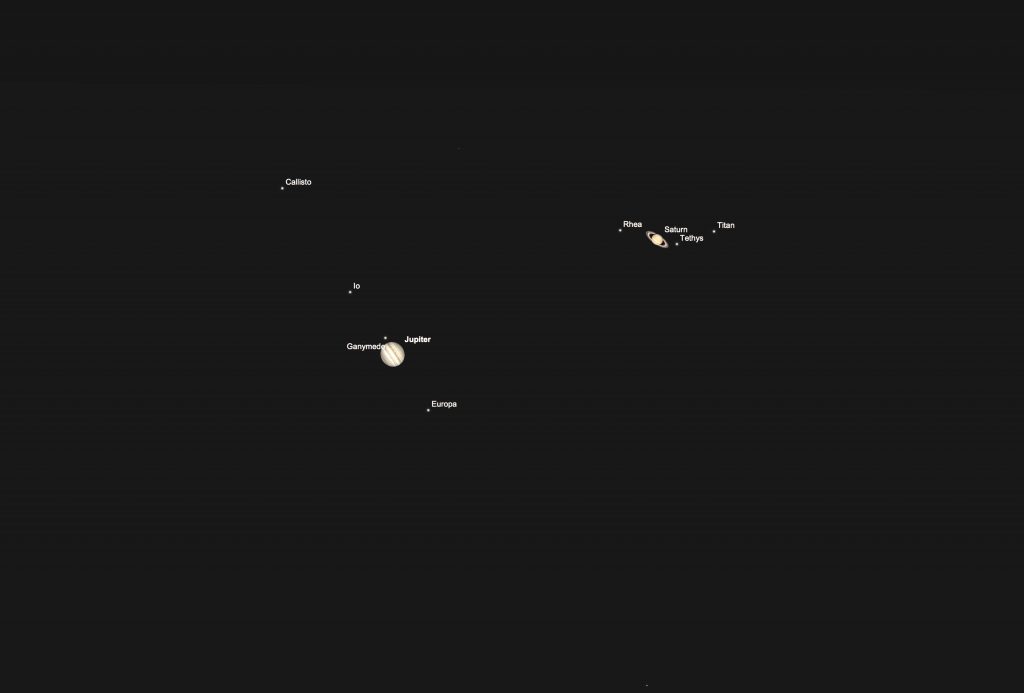by Lance D. Davis
Stargazers get ready for a nice treat as we are about to witness a super-rare planetary alignment not seen for almost 800 years!
Our solar system’s two biggest worlds – the mighty Jupiter followed by the glorious ringed Saturn – will appear in the sky next to each other at their closest since 1623 and closest visible from Earth since the Middle Ages in 1226. This will happen on Dec. 21, 2020, during an event called a “great conjunction.”
Astronomers use the word conjunction to describe close approaches of planets and other objects on our sky’s dome. They use great conjunction specifically for Jupiter and Saturn because of the planets’ top-ranking sizes.

Credit: NASA
Great conjunctions between Jupiter and Saturn happen every 20 years, making the planets appear to be close to one another. This closeness occurs because Jupiter orbits the Sun every 12 years, while Saturn’s orbit takes 30 years, causing Jupiter to catch up to Saturn every couple of decades as viewed from Earth.
The last conjuction between these planets took place on May 28, 2000. This year’s conjunction occurs on Dec. 21, which coincidentally is also the date of the winter solstice in the Northern Hemisphere. The 2020 conjunction is unique because of how close Jupiter and Saturn will appear. In most conjunctions, Jupiter and Saturn pass within a degree of each other. This year, they will pass 10 times closer to each other – the closest in nearly 400 years.

through a telescope at approximately 5:15 p.m. (EST) on Dec. 21. Credit: NASA
Currently, you can watch Jupiter and Saturn get closer in Earth’s sky each evening until their grand finale on Dec. 21. Just look for them shortly after sunset, shining brightly and low in the southwestern sky. Also, tune in to NASA Science Live or NASA Facebook on Dec. 17 at 3:00 p.m. EST (2:00 p.m. CST) and learn how to see Jupiter and Saturn’s great conjunction.
During the great conjunction, the giant planets will appear just a tenth of a degree apart – that’s about the thickness of a dime held at arm’s length! This means the two planets and their moons will be visible in the same field of view through a small telescope. Truly, this is a once-in-a-lifetime event!
Some astronomers suggest the pair will look like an elongated star and others say the two planets will form a double planet. To know for sure, we’ll just have to look and see. Either way, take advantage of this opportunity because Jupiter and Saturn won’t appear this close in the sky until 2080!
Additional Information & Resources:
› Learn how to photograph the Jupiter-Saturn conjunction.
› Read about mission visits to Jupiter and Saturn.
› Find an astronomy club or event near you!
